How To Start A Spring Vegetable Garden
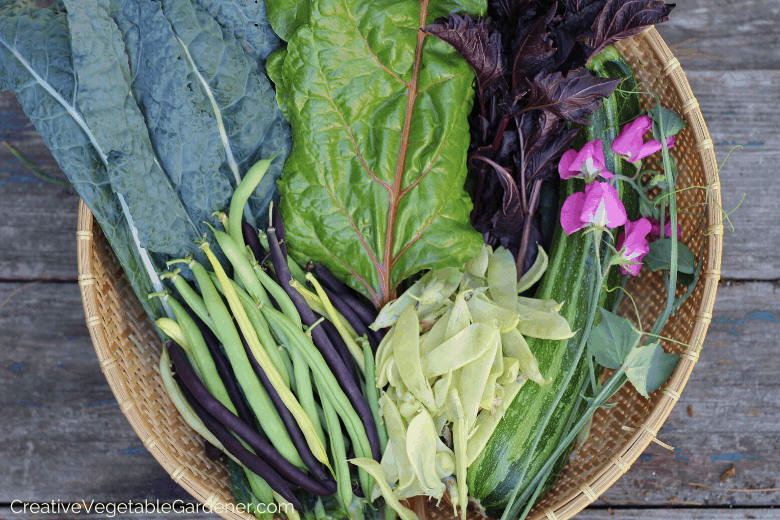
The spring gardening season is the most highly anticipated of the year! By the end of the winter, we find ourselves constantly checking the weather to see if spring planting time has arrived.
But, what vegetables to plant in spring can be confusing for many gardeners.
And that's totally understandable because there are actually different phases to the spring gardening season where the list of vegetables to plant are different depending on where you live and what your season is like.
In this article, you'll learn about these two planting phases of the spring season, the complete list of vegetables you can plant in your garden in spring, and how to figure out exactly when to plant each of these vegetables.
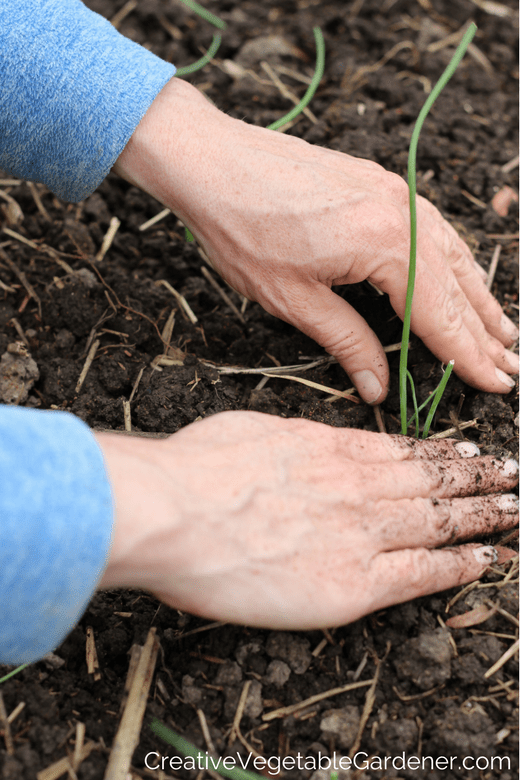
Vegetables to Plant in Spring
There are two important concepts to understand before we jump into the list of spring vegetables to plant in your garden.
What are "spring vegetables"?
Depending on where you live, there are likely two different phases to spring planting – the vegetables you plant before your average last frost and those you plant after your average last frost. The vegetables you plant during these two times are very different.
In general, the vegetables planted before your average last frost are the spring vegetables. These are cold hardy and able to withstand a frost (32 degrees F).
Vegetables planted after your average last frost are the summer vegetables, even though it might not be summer yet. These vegetables will die if the temperatures dip to around or below freezing, so you want to make sure you're in the clear weather-wise before planting them out in the garden.
For example, my average last frost in zone 5, Wisconsin, is around May 15. But, I start planting in my garden each year around April 20, depending on the weather. That's about one month before my average last frost and it's during this month when I plant spring vegetables like spinach, lettuce, and peas.
After May 15, even though it's technically still spring on the calendar, I start planting the summer vegetables like peppers, tomatoes, and summer squash. Of course, I always check the 10 day forecast before planting and hold off if there's a chance of frost.
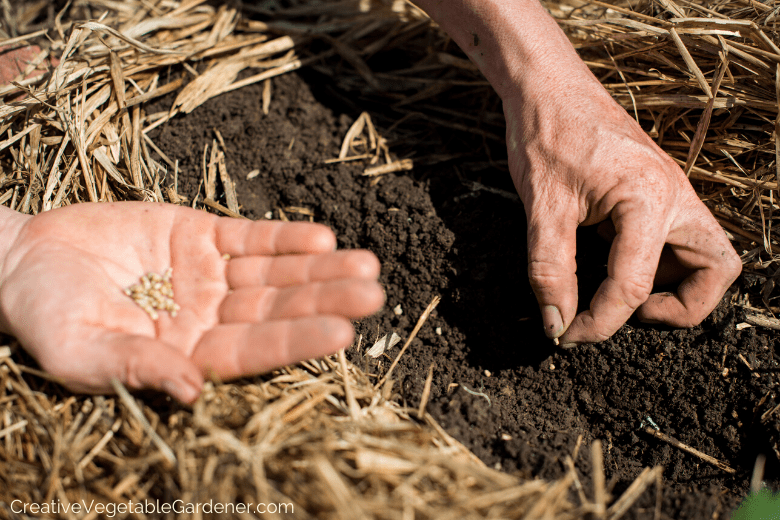
Direct Seed vs. Transplant
The other category to know is direct-seeded vs. transplanted vegetables.
Not every vegetable is planted the same way. Some vegetables are commonly planted by seeds and to grow others you'll need to have a plant instead of a seed.
Taking a seed directly out of the packet and planting it right into your garden bed is called direct seeding. If you've ever grown green beans, carrots, or spinach, you've likely planted them in your garden this way.
In contrast, when you take a vegetable plant, dig a hole in the soil, and plant it into your garden, it's called transplanting.
The vegetable plant is usually called a seedling or a transplant. It's a baby plant grown from seed by you in your home or by a nursery or farmer in a greenhouse.
When you're planning your garden and ordering and gathering supplies for the season, one of the most important things to know is whether you need seeds or plants for each vegetable you want to grow.
You can read more about direct seeding and transplanting in this article: How to Know When to Sow a Seed or a Plant in Your Garden.
To help you out, I divided the following list of spring vegetables is into direct seeded vs. transplanted vegetables.
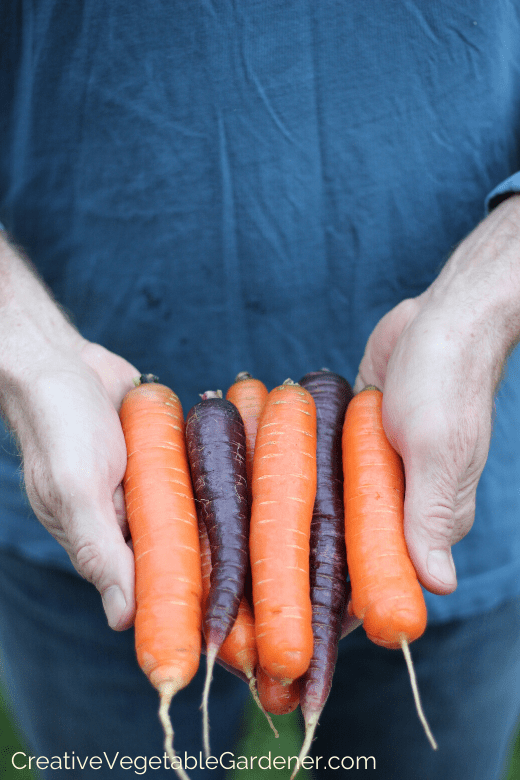
This post contains affiliate links.
Direct Seeded Vegetables to Plant in Spring
If you're going to plant any of these vegetables you'll need to make sure you order seeds in advance so you're ready to go when the time comes! Further down in the article I'll share my favorite sources for seeds.
I've listed any tips you should know about each vegetable and my favorite varieties to grow in zone 5 next to each vegetable.
Arugula
Arugula does best in cool weather, so make sure you plant it early in spring. It bolts quickly in warmer weather.
Bolting means the plant sends up a flower to reproduce and often the leaves will start to get bitter and inedible when this happens.
Recommended Varieties: The standard variety is often just called Arugula. I also like Astro. Find the standard variety here.
Beets
Beets are one of the vegetables I didn't care much for until I started growing them in my own garden. they're so much better than the beets most of us ate when we were young!
You can plant them early in spring and they'll be ready to eat in about two months.
Recommended Varieties: Detroit Dark Red, Chioggia, Touchstone Gold, or try a blend of varieties. Other good varieties here.
Carrots
Don't just plant orange carrots, you can get those from the grocery store! Experiment with a mix of orange, yellow and purple instead. There are so many interesting and unique varieties out there.
Even though carrots take a while to grow to harvest size I've found that kids love pulling them out of the ground.
Recommended Varieties: Bolero, Gold Nugget, Cosmic Purple, Carnival Blend
Cilantro
Cilantro is similar to arugula, it thrives in the cool weather of early spring and tends to bolt when the warmer weather comes. So, plant it early!
My most popular video on Youtube by far is about How to Grow Cilantro All Season Long.
Recommended Varieties: Long-standing
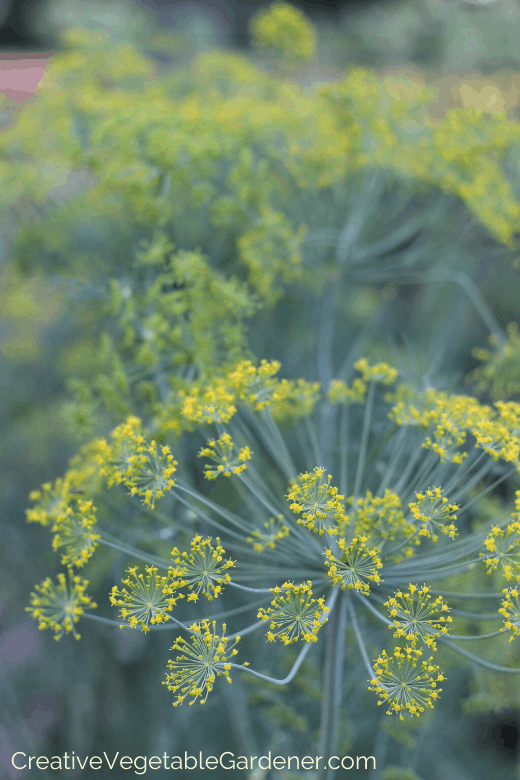
Dill (or transplant)
Dill is easy to grow. In fact, once you have it in your garden it will likely drop its seeds and keep coming back every year. You can plant it by seed, or if you don't want very much you can purchase a plant from your local nursery or farmers market.
Recommended Varieties: Bouquet
Kohlrabi (or transplant)
Kohlrabi is a unique and fun spring vegetable to grow. It comes in white or purple. You can plant either or both!
You can either direct seed or transplant kohlrabi. If you plant seedlings in spring you'll get a harvest a bit more quickly.
Recommended Varieties: Kolibri (purple), Winner (white) Buy a mix of purple and white here.
Peas
Peas are one of the quintessential spring vegetables. They're often one of the first vegetables planted in the garden in early spring.
There are sugar snap, shelling, and snow peas. Sugar snap are usually the sweetest and you can eat the pod. Snow peas are the flatter varieties you often see in Asian cooking, you also eat the entire pod.
Shelling peas are grown for the little peas inside, similar to what you get when you buy frozen peas at the store. You don't eat the pod.
There are purple, yellow and green peas.
Recommended Varieties: Sugar Snap, Golden Sweet (yellow), Sugar Magnolia (purple)
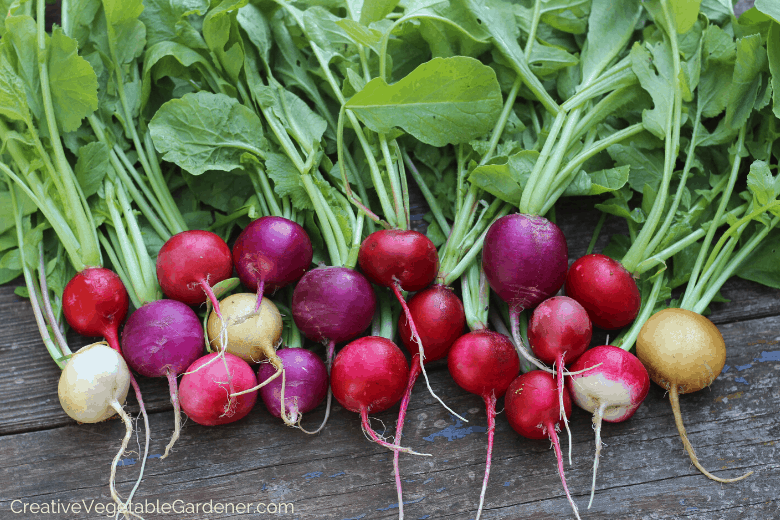
Radish
Radishes are one of the quickest spring vegetables you can grow in your garden. They're ready for harvest in as little as 25 days! They're a great crop to plant with kids because they grow so fast.
There are also lots of different colors and varieties of radishes to choose from, including black!
Recommended Varieties: Cherry Belle, Easter Egg Blend, Black Spanish
Potatoes
In general, growing potatoes is pretty easy in most climates. And, you can grow fun colors you can't find in the grocery store, like purple, blue, and pink. Summer potato salad, here we come!
Recommended Varieties: All Red, Magic Molly
Salad Mix
Salad mix is the mixed baby leaves you buy from the grocery store. It's also called mesclun.
The great thing about growing it at home is that it lasts much longer in the fridge than store bought salad mix and has a lot more taste.
There are so many variety mixes to choose from. I suggest reading through the listings and choosing a few that sound delicious to you.
Recommended Varieties: See a bunch of different options here
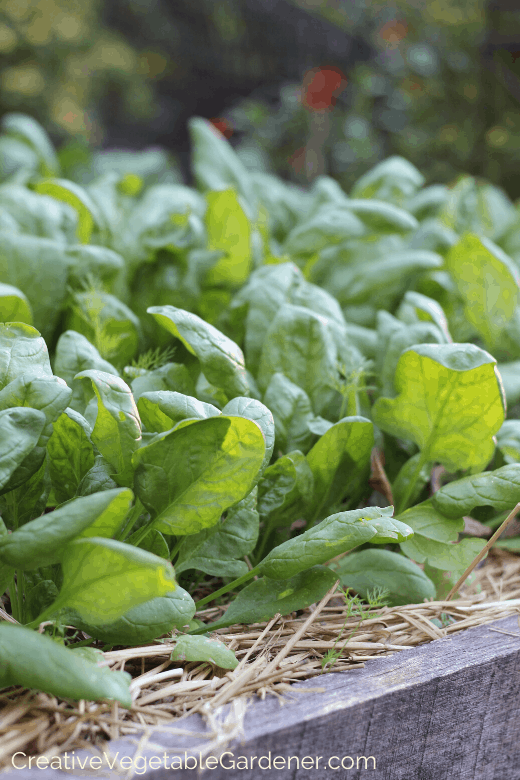
Spinach
Spinach falls into the same category as arugula and cilantro. Plant it early because it loves cool weather and bolts easily. I actually have a much easier time growing it in the fall, where it thrives and will survive the winter to grow again the next year.
Read about growing fall spinach in this article Fall Spinach: Why It's the Most Amazing Vegetable to Grow.
Recommended Varieties: Verdil, Renegade
Turnips
Don't turn your nose up at turnips until you've tried the tender salad varieties. They're more like a non-spicy, buttery radish.
They're nothing like the tough fall turnips you're probably thinking about!
Recommended Varieties: Market Express
Other Greens
Besides arugula, spinach, and salad mix, there are lots of intersting greens you can plant in your garden to spice up your spring salads – bok choi, mustard, mizuna, and other Asian greens. Find a few I've planted and liked below.
Recommended Varieties: Baby Bok Choi, Mizuna, Tatsoi, Mustard Mix
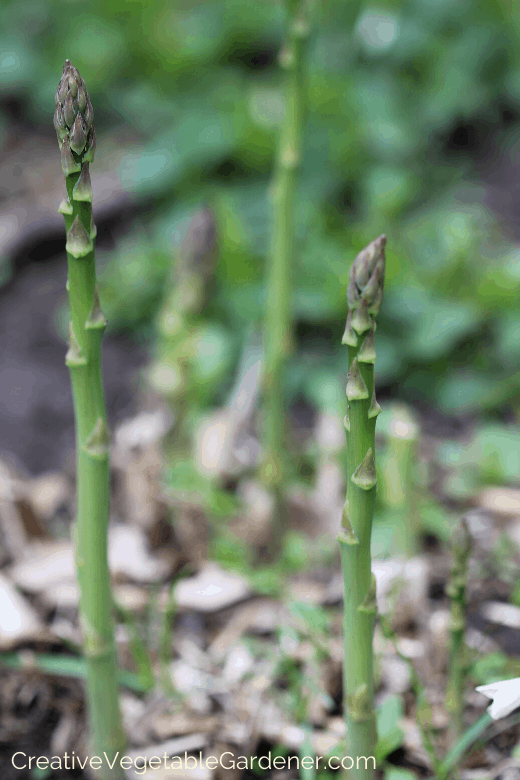
Vegetables to Transplant in Spring
If you're going to plant any of these vegetables you'll need to make sure either start your own plants at home or plan to purchase plants from a local nursery or farmers market.
I've listed any tips you should know about each vegetable and my favorite varieties to grow in zone 5 next to each vegetable.
Asparagus
Asparagus is a perennial and is planted using crowns you'll need to purchase online or from a local nursery. It's a perennial vegetable, so that means you'll plant it once and it will come up every year. Aspargus plants can live up to 25 years!
I don't recommend planting aspargus in your vegetable garden unless it's very large. It can get unwieldy later in the summer because you let the last spears flower and set seed so they can build up energy for the next year.
They can really get in the way if they're in the middle of the garden. (Been there, done that!) It's best to give them plenty of room in their own separate area.
Recommend Varieties: Jersey Supreme, Purple Passion
Broccoli
Broccoli is one of the vegetables I grow in my garden every few years. I don't find that it's always "worth it". And what's worth it to grow is a very personal decision. You can read mroe about how to evaluate which vegetables are wroth it to grow for you in this article: How to Compare Vegetables to Decide What's Worth It to Grow.
Recommend Varieties: Belstar, DeCicco
Brussels Sprouts
I'm often on the fence about growing Brussels sprouts. I love to eat them in the late fall and early winter, and they can be expensive at the farmers market.
But, they take a long time to produce. You'll plant them in spring and won't get a harvest for 120 days or so. That means they sit in the garden for the entire season.
They can also be challenging to grow, but I still choose to plant them almost every year!
Recommend Varieties: Dagan, Nautic
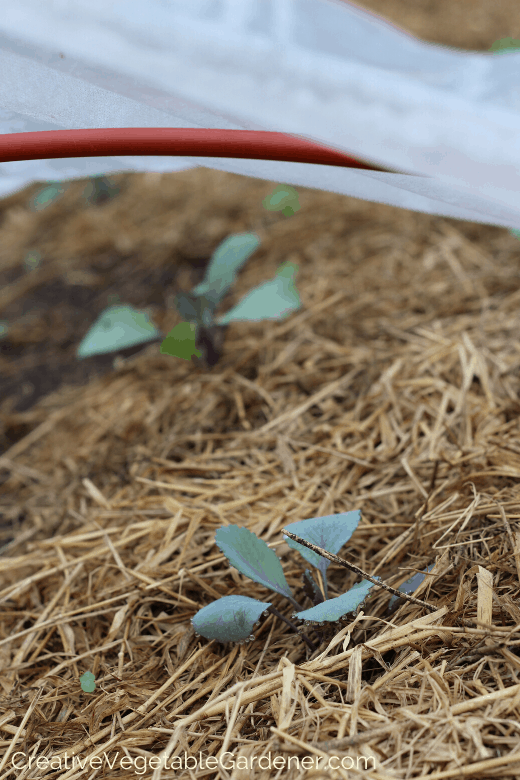
Cabbage
My favorite thing to do with my cabbage harvest is to ferment it into sauerkraut and curtido, which is very easy once you understand the process.
Read about my favorite fermentation recipes here: 5 No-Fail Fermented Food Recipes for Beginners.
Recommended Varieties:Tendersweet, Red Express, Red Acre
Cauliflower
Cauliflower can be difficult to grow in many climates. I don't necessarily recommend it for beginning gardeners or those without a lot of space. But, if you like to experiment you can try a white, purple, or cheddar variety.
Recommended Varieties: Early Snowball (white), Cheddar (orange), Chef's Choice Blend (mix of green, white, purple)
Collards
Collards are easy to grow and like kale, produce heartily all season long. If you like eating them you should definitely plant them in your garden this spring!
Recommended Varieties: Flash
Fennel
If you love the flavor of anise, or like to experiment with Italian dishes, fennel is the vegetable for you!
Recommended Varieties: Perfection, Preludio
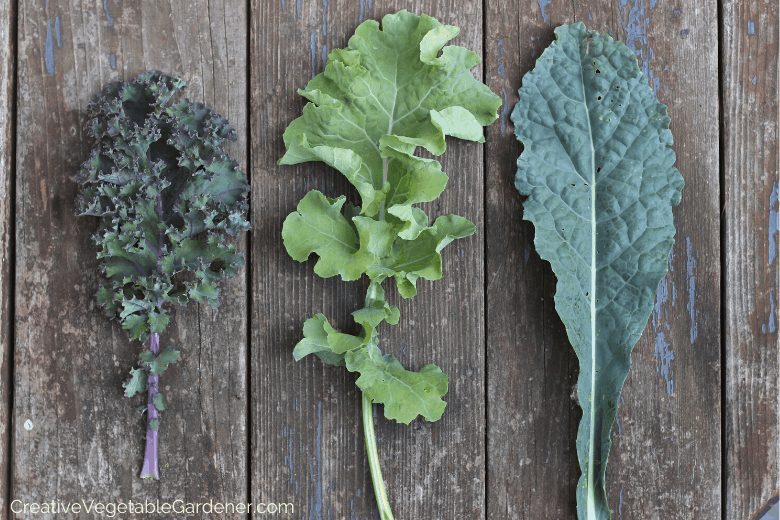
Kale
In most northern climates, kale is definitely a low maintenance vegetable! You can plant it early in spring and it will produce plenty of kale leaves for the entire season.
It even thrives in the cool weather of fall and can survive the first few touches of frost. Amazing!
If you want large kale leaves like you buy in a bunch at the grocery store I recommend planting seelings, not seeds. Seeds planted in a row in your garden will give you baby kale, not large kale.
Recommended Varieties: Blue Curled Dwarf, Red Russian, Nero Toscana
Leeks
Leeks are a long season vegetable, which means they will take about 110 days from planting until harvest. That's a loooong time.
But, they don't take up a lot of room and there's not much you need to do to take care of them apart from weeding and watering. Plus, they're ready for harvest in the fall, just in time for potato leek soup.
Recommended Varieties: King Richard
Lettuce (head)
If you want to grow a lettuce head it's best if you plant a seedling. Lettuce heads take longer to grow than salad mix and should be planted early in spring.
There are lots of different types of lettuce heads – romaine, crisphead, batavia, and butterhead. I personally love butterhead the most and it's the only kind I grow each season.
Recommended Varieties: Buttercrunch, Marvel of Four Seasons
Onions
If you're a home cook, there's no such thing as too many onions.
I grow 300-500 every year! They can be a little tricky to grow sometimes if you don't know a few simple secrets. Luckily, I have a detailed post here that's all about how to grow awesome onions.
Recommended Varieties: Redwing, Patterson, Yellow of Parma, Cabernet

Raspberries
You'll need to buy raspberry plants or canes if you want to plant them in spring. They spread really easily so I don't recommend planting them in your vegetables garden. They could take over! (Been there, done that, too!)
Because raspberries are so different than most vegetables planted in spring, I wrote an entire post about them: Planting Raspberry Canes for a Fruitful Summer Harvest.
Recommended Varieties: See the above blog post for a breakdown of the different kinds of raspberries.
Scallions
Scallions are easy to grow throughout the season in your garden and they make the perfect garnish for lots of different dishes in spring and summer.
You can grow either white or red.
Recommended Varieties: White Lisbon, Deep Purple
Shallots
Shallots are like a baby gourmet onion! If you love to cook with unique ingredients then growing shallots might be a real treat. They're similar to growing onions, but produce more than one bulb from each plant.
Recommended Varieties: Conservor
Swiss Chard
Chard is similar to kale in that you plant it in spring and it keeps producing leaves all season long. You simply cut some off with a knife when you're ready to cook with it and the plant will get back to the work of growing new leaves to replace them.
If you want full sized leaves like you see in the grocery store I suggest planting it by seedling instead of seed.
Rainbow chard adds some pretty pops of color to complement the various shades of green in your garden.
Recommended Varieties: Five Color, Ruby Red, Peppermint

HERBS
When buying herb plants I recommend going to your local nursery or farmers market and purchase plants there. It's not worth it to start your own seeds for any of the herbs in the list below.
The exception to this is basil, which is easy to start at home, and cilantro and dill which are direct seeded.
For most of these herbs, you should be able to get away with one plant because they all tend to grow fairly large and you only need a small handful of fresh herbs for most recipes.
Many of the herbs below are perennials, which means they'll come back each season.
Garlic Chives
There are garlic chives and onion chives. Garlic chives have a flatter leaf and white flowers in the summer. They tend to spread a bit.
Recommended Varieties: Whatever you can find. There aren't really that many varieties.
Marjoram
Marjoram is similar to oregano, but a little sweeter.
Recommended Varieties: The most common variety is Sweet.
Mint
Mint is extremely invasive! If you decide to plant it be very careful where you put it and you must monitor it to make sure it doesn't take over an entire area. I love mint tea so I do grow it in my garden, but I keep it in my herb spiral so it doesn't get out of control.
Read about How to Easily Build an Herb Spiral.
Recommended Varieties: There are many different kinds of mint – apple, chocolate, lime, and more. Have fun picking out your favorite!

Onion Chives
Onion chives come up early in the spring and produce a tasty pink flower. They should come back every year in most gardens.
Recommended Varieties: Whatever you can find. There aren't that many varieties.
Oregano
Oregano spreads very easily, so keep an eye on it once it gets established and don't be shy about yanking it back when it gets out of hand.
Recommended Varieties: Greek or Italian oregano are the two most common varieties.
Parsley
In colder weather gardens like mine in Wisconsin, parsley is an annual and I have to plant it every spring. If you live in a warmer climate it may survive the winter. Although it tends to go to seed the second year.
There are two kinds – flat and curled leaf.
Even though it's an annual plant it does produce a lot of parsley. I usually plant one or two in my garden and that's plenty for the season.
Recommend Varieties: Flat Leaf, Curled

Sage
Common Sage is the most widely available. There are some other interesting varieties like Tricolor and Pineapple if you can find them. The common varieties should be a perennial in most climates. Sometimes the specialty varieties don't' survive the winter in colder climates.
Recommended Varieties: Common, Tricolor, Golden, Pineapple
Tarragon
Tarragon is extremely easy to grow and the plant gets very big! There's no way you'd be able to use it all. Make sure you put it in a spot where you won't mind when it gets several feet tall.
Recommended Varieties: The most common is French.
Thyme
Thyme should also return every year as a perennial herb. There are actually a lot of interesting thyme varieties out there, so I'd suggest looking around to find one you like.
Recommended Varieties: Lemon, Orange, Creeping, Silver-edged
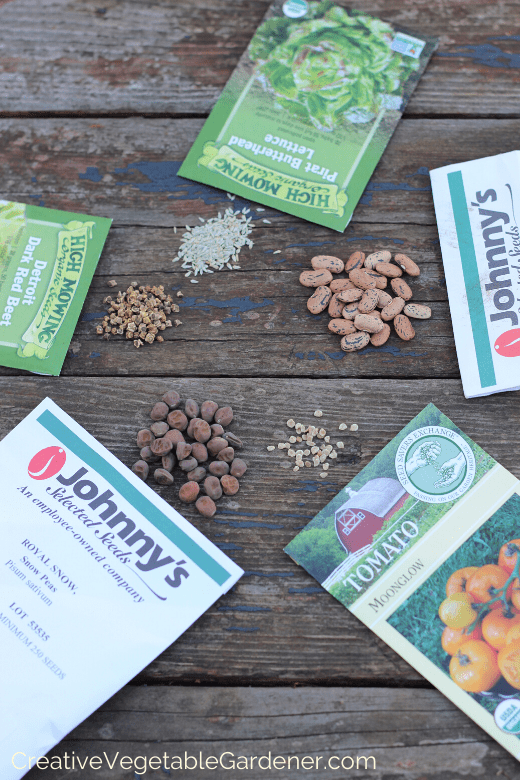
Where to Buy Seeds for Spring Vegetables
My favorite seed companies that offer many of the varieties you learned about in this article are:
Johhny's Selected Seeds
High Mowing Seeds
Seed Savers Exchange
Botanical Interests
Renee's Garden Seeds
Baker Creek Seeds
Etsy: I gathered some of my favorite varieties from different sellers at this link.
Amazon: Find my recommended varieties, tools, supplies, books and more in my Amazon storefront here.
I also wrote an article Where to Buy Vegetable Seeds and Plants! Don't Make These Mistakes.
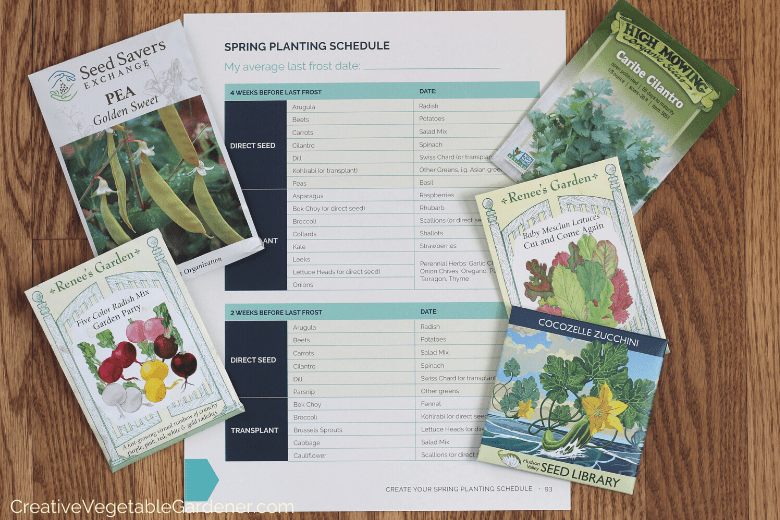
When to Start Planting Spring Vegetables
Every vegetable listed in this article is a cool-season vegetable that can be planted before your average last frost date. They can withstand the light frosts of the early weeks of the growing season, and in fact, these vegetables often grow best in the cooler temperatures.
The next step after deciding which of these you want to plant in your spring garden is to create a custom planting schedule based on your average last frost.
You can visit the post below where I walk you through how to determine your average last frost date and provide a printable calendar you can personalize with dates you should be planting each vegetable based on your average last frost.
This printable will also serve as a list of all of the vegetables you learned about above and divides them into direct-seeded and transplanted vegetables. It's a handy cheat sheet!
Read it here: How to Grow More Food with a Custom Planting Schedule

Additional Resources for Planting Your Garden
Check out my how-to video series, Digging Into Spring. It's all abouttaking action. Early spring is make or break time in the garden. You can set yourself up for an excellent season, or doom yourself to a mediocre one. This how-to video series will focus on simple, effective and smart actions you can take in your garden that will deliver big results all season long. Watch some preview videos here.
I have how-to video series for lots of exciting seasonal topics! And many of the videos are filmed in my awesome front yard garden. Check the list out here.
.
. .
The following blog articles were mentioned in this post:
- How to Know When to Sow a Seed or a Plant in Your Garden
- How to Grow Cilantro All Season Long
- Fall Spinach: Why It's the Most Amazing Vegetable to Grow
- How to Compare Vegetables to Decide What's Worth It to Grow
- 5 No-Fail Fermented Food Recipes for Beginners
- Ultimate Guide to Growing Onions
- Planting Raspberry Canes for a Fruitful Summer Harvest
- How to Easily Build an Herb Spiral
- Where to Buy Vegetable Seeds and Plants! Don't Make These Mistakes
- How to Grow More Food with a Custom Planting Schedule
Don't let this spring season pass you by without getting out there and planting your favorite spring vegetables. When you focus on getting your spring garden planted early you'll reap the rewards the rest of the season with big harvests, a more consistent supply of food, and a variety of vegetables to turn into delicious dishes for your family.
And when you're ready to get out there and get planting, watch this video where I show you how easy it can be to prep your garden beds for planting. No backbreaking labor needed!
How To Start A Spring Vegetable Garden
Source: https://www.creativevegetablegardener.com/vegetables-to-plant-in-spring/
Posted by: peaseclas1988.blogspot.com

0 Response to "How To Start A Spring Vegetable Garden"
Post a Comment